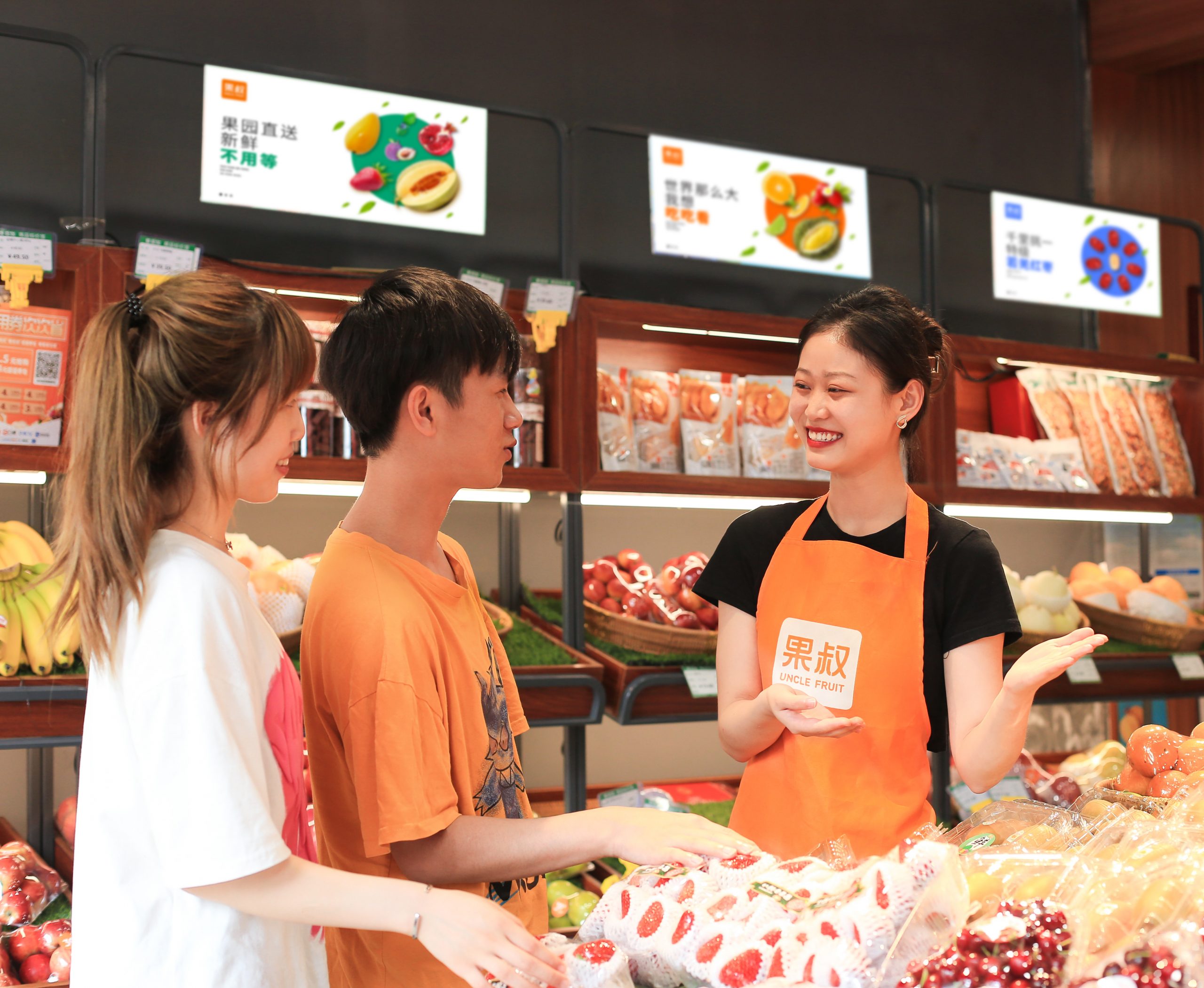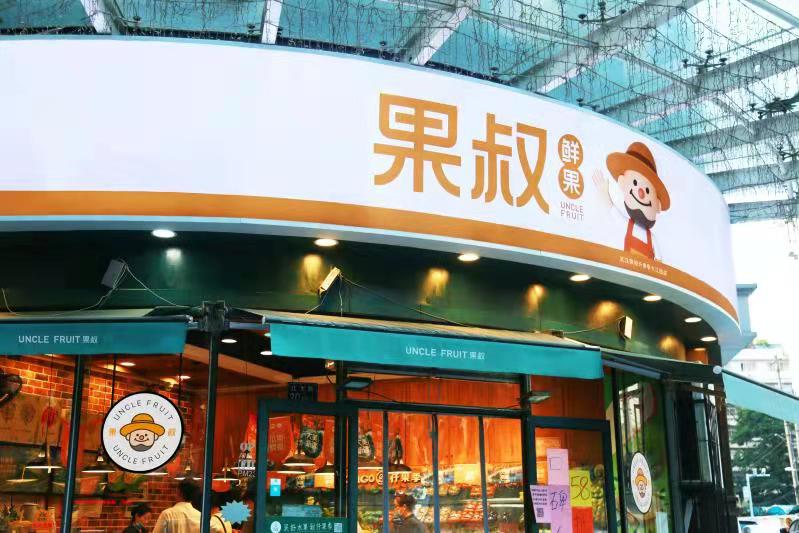UncleFruit, one of the top 5 Chinese specialised fruit grocery chains, is celebrating its 8th anniversary with 1,200 stores
Eurofresh Distribution Interview with UNCLE FRUIT procurement manager Philippe Ortiz.
F&V Sales per category: how are sales divided between the main categories like berries, temperate fruit, tropical fruit, bananas, vegetables?
Philippe Ortiz: We mainly sell fresh fruit, of which the two stars are the Chilean cherries in winter and the South-East Asian durians. They each account for more than 20% of the total yearly revenue. This year we also see a noticeable increase in demand for domestic fruits (e.g. shine muscat, sugar plums, strawberries). They have gained in quality in recent years and are more affordable than imported fruits, thus seducing customers in this difficult economic environment.
Which new varieties have been a hit with consumers?
PO: Shine muscat has become a top-seller in the past two years. Originally imported from Japan, it is now cultivated in many regions of China, like Yunnan and Sichuan. In addition, the growers there benefit from a double harvest each year. Their relatively high retail price combined with lower costs makes them a very hot item for all players in the supply chain.
“Ready-to-eat” avocados are the latest success story in China. What investments have been made in the supply chain and how has the market performed?
PO: Three years ago, as a joint venture with Shanghai company Fruta Cloud, we built the first avocado ripening centre in South China, located in our operations centre in Foshan. Together with the ripening centre, we have created a brand called Mokado, which delivers ready-to-eat avocados to retailers like ours and Mr Hippo.
This season, what strategies will be implemented to replace US produce on the shelves, particularly grapes and citrus? Which sources have seen most growth this season?
PO: The fresh fruit business is constantly changing and we are used to facing supplies shortages while at the same time new opportunities arise.
Although US fruits are subjected to high import duties, they still offer top quality, particularly Washington cherries in summer, Californian grapes in autumn, and citrus in spring time.
But of course, all these categories have competition:
- US cherries vs local and Canadian cherries;
- US grapes vs domestic grapes, as the domestic season has been greatly extended and overlaps with the US;
- US citrus vs local, Egyptian, Spanish, South African and Australian citrus.
More recently, Australian fruit imports have faced new challenges entering the market. But once again, alternatives have been presented to buyers (e.g. Chilean and RSA grapes; RSA, Egyptian, US and Chilean citrus…).
On the Chinese market, new opportunities are constantly opening up to enlarge the supply chain, as was the case with the first imports of Chilean citrus last year, which will compete with South African and Australian citrus this summer. Market regulators in China have organised fruit imports so that competition helps regulate the market in an efficient way.
Quality requirements: what major specifications and certified protocols are you requiring from your suppliers in order to distinguish yourselves from other retail chains?
PO: In May, our company celebrated its 8th anniversary, and I like to believe that we have a good understanding of the tastes and preferences of our customers. For each fruit category, we have specific requirements in order to serve them best! For cherries, for instance, firmness is a key factor, with Durofell of over 75 at origin. But we also operate quality control at destination for each container in terms of colour, brix, stems, pitting, etc.
To be honest, the best way in which we can bring satisfaction to our customers is to work with the top brands in each category, like Taylor for New Zealand apples and 2PH for Australian mandarins!
Proprietary brands: are there any private labels used by the chain? What strategies are implemented for quality positioning and product assortments? What are the sales shares and marketing goals?
PO: We don’t use many private brands, but by selling the best possible fruits and the brands of the best growers and exporters worldwide, we aim to bring value to our own brand 30+ / Uncle fruit.
We run promotions for our partner brands like 2PH, Taylor, Fruttita, Magna, Cerasus and many others. We also advertise for our partner Xinjiangguoye and their product line of dried fruits.
Organics & other value-chains: What developments are planned in this area? Are there any CSR/social & environmental programmes developed internally or with your partners?
PO: Our parent company Xinjiangguoye / Guoshu (known as “Uncle Fruit”) was originally created as a social and economic system to develop agriculture in Xinjiang and help local farmers by creating a supply chain to sell their fruit.
With the merger of Guoshu and 30+, these fruits can reach customers as far away as southern China. I call this a true value-chain: from the orchard to the end consumer, we deliver fresh fruits!
30+ and Uncle Fruit key numbers:
100% of produce sold is fresh fruit & vegetables
Outlets: 1,200 stores of 30-40 m2 each; new openings daily!
Market ranking: 3rd retailer in China in the category of specialist fresh fruit retailer, 2nd retailer in southern China
Revenue in 2020: 1 billion RMB for the 30+ brand which operates 400 stores in southern China. A new group of 1,200 stores under the new flagship brand “Uncle Fruit” is currently completing its merger.
25% of growth forecasted for the group in 2021.





